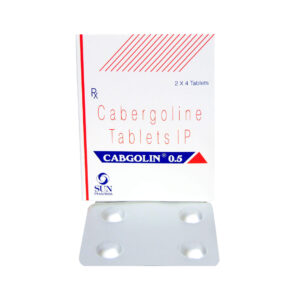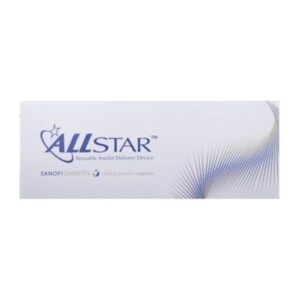Letrozole Information
Pronunciation
(LET roe zole)
What is this drug used for?
• It is used to treat breast cancer in women after change of life.
• It may be given to you for other reasons. Talk with the doctor.
Frequently reported side effects of this drug
• Loss of strength and energy
• Hot flashes
• Nausea
• Vomiting
• Cough
• Back pain
• Muscle pain
• Joint pain
• Constipation
• Diarrhea
• Night sweats
• Sweating a lot
• Trouble sleeping
• Weight loss
• Abdominal pain
• Hair loss
• Weight gain
Other side effects of this drug: Talk with your doctor right away if you have any of these signs of:
• Urinary tract infection like blood in the urine, burning or painful urination, passing a lot of urine, fever, lower abdominal pain, or pelvic pain.
• Swollen glands
• Edema
• Chest pain
• Severe dizziness
• Passing out
• Shortness of breath
• Severe headache
• Vision changes
• Vaginal bleeding
• Depression
• Unable to pass urine
• Change in amount of urine passed
• Signs of a significant reaction like wheezing; chest tightness; fever; itching; bad cough; blue skin color; seizures; or swelling of face, lips, tongue, or throat.
Medication Safety Issues
Sound-alike/look-alike issues:
Femara may be confused with Famvir, femhrt, Provera
Letrozole may be confused with anastrozole
International issues:
Letaris, a formerly marketed Dutch brand name product for letrozole, may be confused with Letairis, a US brand name for ambrisentan.
Storage/Stability
Store at room temperature of 25°C (77°F); excursions permitted to 15°C to 30°C (59°F to 86°F).
Adverse Reactions
>10%:
Cardiovascular: Flushing (50%), edema (7% to 18%)
Central nervous system: Headache (4% to 20%), dizziness (3% to 14%), fatigue (10% to 13%)
Dermatologic: Diaphoresis (24%), night sweats (15%)
Endocrine & metabolic: Hypercholesterolemia (3% to 52%), hot flash (6% to 34%), weight gain (2% to 13%)
Gastrointestinal: Nausea (9% to 17%), constipation (2% to 11%)
Neuromuscular & skeletal: Weakness (4% to 34%), arthralgia (8% to 25%), arthritis (7% to 25%), ostealgia (5% to 22%), musculoskeletal pain (21%), back pain (5% to 18%), bone fracture (10% to 15%), osteoporosis (5% to 15%)
Respiratory: Dyspnea (6% to 18%), cough (6% to 13%)
1% to 10%:
Cardiovascular: Chest pain (6% to 8%), hypertension (5% to 8%), chest wall pain (6%), peripheral edema (5%), cerebrovascular accident (2% to 3%), thromboembolism (≤3%; including portal vein thrombosis, pulmonary embolism, thrombophlebitis, venous thrombosis), transient ischemic attacks (≤3%), angina pectoris (≤2%), hemorrhagic stroke (≤2%), ischemic heart disease (≤2%), thrombotic stroke (≤2%), cardiac failure (1% to 2%), myocardial infarction (1% to 2%)
Central nervous system: Insomnia (6% to 7%), pain (5%), anxiety (<5%), depression (<5%), vertigo (<5%), drowsiness (3%), hemiparesis (≤2%)
Dermatologic: Skin rash (5%), alopecia (<5%), pruritus (1%)
Endocrine & metabolic: Weight loss (6% to 7%), hypercalcemia (<5%)
Gastrointestinal: Diarrhea (5% to 8%), vomiting (3% to 7%), abdominal pain (6%), anorexia (1% to 5%), dyspepsia (3%)
Genitourinary: Mastalgia (2% to 7%), urinary tract infection (6%), vaginal dryness (5%), vaginal hemorrhage (5%), vaginal irritation (5%)
Hematologic & oncologic: Lymphedema (7%; post-mastectomy), second primary malignant neoplasm (2% to 5%)
Infection: Infection (7%), influenza (6%), viral infection (6%)
Neuromuscular & skeletal: Limb pain (4% to 10%), myalgia (7% to 9%), osteopenia (4%)
Ophthalmic: Cataract (2%)
Renal: Renal disease (5%)
Respiratory: Pleural effusion (<5%)
<1%, postmarketing, and/or case reports: Anaphylaxis, angioedema, arterial thrombosis, blurred vision, carpal tunnel syndrome, dysesthesia, dysgeusia, endometrial carcinoma, endometrium disease, endometrial hyperplasia, erythema multiforme, eye irritation, fever, hepatitis, hypersensitivity reaction, increased appetite, increased liver enzymes, increased thirst, irritability, leukopenia, memory impairment, nervousness, ovarian cyst, palpitations, paresthesia, spontaneous abortion, stomatitis, tachycardia, tenosynovitis (trigger finger), thrombocytopenia, toxic epidermal necrolysis, urinary frequency, urticaria, vaginal discharge, xeroderma, xerostomia –








